16 Otherworldly Frozen Landscapes You Won't Believe Exist On Earth
The world’s frozen landscapes are among its most otherworldly. Towering glaciers, shimmering ice caves, and surreal tundras create alien-like vistas that seem transported from another realm. These icy wonders, shaped over millennia by wind, water, and extreme cold, showcase nature’s breathtaking artistry in ways that defy imagination. From the electric-blue icebergs of Antarctica to the glacial deserts of Siberia, these landscapes exist at the fringes of human experience—places so extreme and pristine they feel more suited for an interstellar odyssey than our own planet. Whether carved by relentless winds, sculpted by sub-zero temperatures, or preserved in time by perpetual frost, these frozen marvels offer a glimpse into Earth’s most surreal corners. Join us as we explore 16 of the most ethereal frozen wonders, places that truly look like they belong to another planet.
1. Lake Baikal’s Ice Bubble Wonderland, Russia
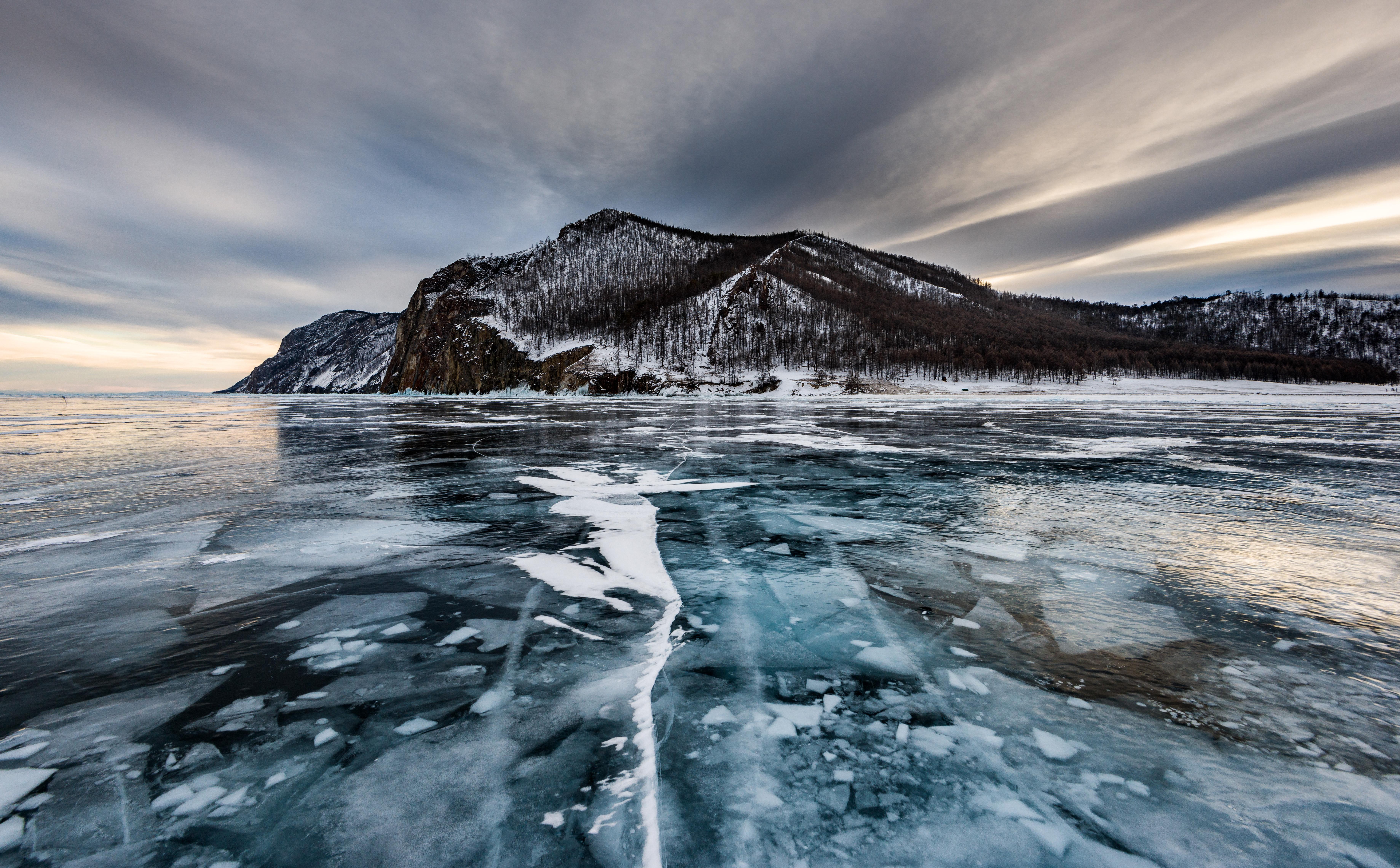
Lake Baikal, the world’s deepest and oldest freshwater lake, transforms into an alien-like wonderland each winter, creating one of the most surreal icy landscapes on Earth. Spanning over 12,000 square miles, Baikal is so vast that it often resembles a frozen sea rather than a lake. When temperatures plummet to -40°F (-40°C), a mesmerizing phenomenon occurs—methane bubbles from decaying organic matter at the lakebed become trapped beneath the thick, glass-like ice, forming layers of perfectly round, white spheres that appear to float at different depths. This creates an effect that looks like frozen smoke spiraling upwards, as if time itself has paused. The lake’s ice is so clear that in some places, you can see over 100 feet (30 meters) straight down, revealing eerie formations of frozen water and submerged plants. Enormous cracks, sometimes stretching miles across the lake, form intricate, lightning-like patterns, each producing haunting echoes that resonate as the ice subtly expands and contracts. This "singing ice" creates a mystical, alien-like soundtrack, adding to the ethereal experience. Baikal is often called the Galápagos of Russia due to its rich biodiversity, hosting thousands of endemic species. But in winter, it feels more like Europa, one of Jupiter’s frozen moons.
2. Perito Moreno Glacier, Argentina
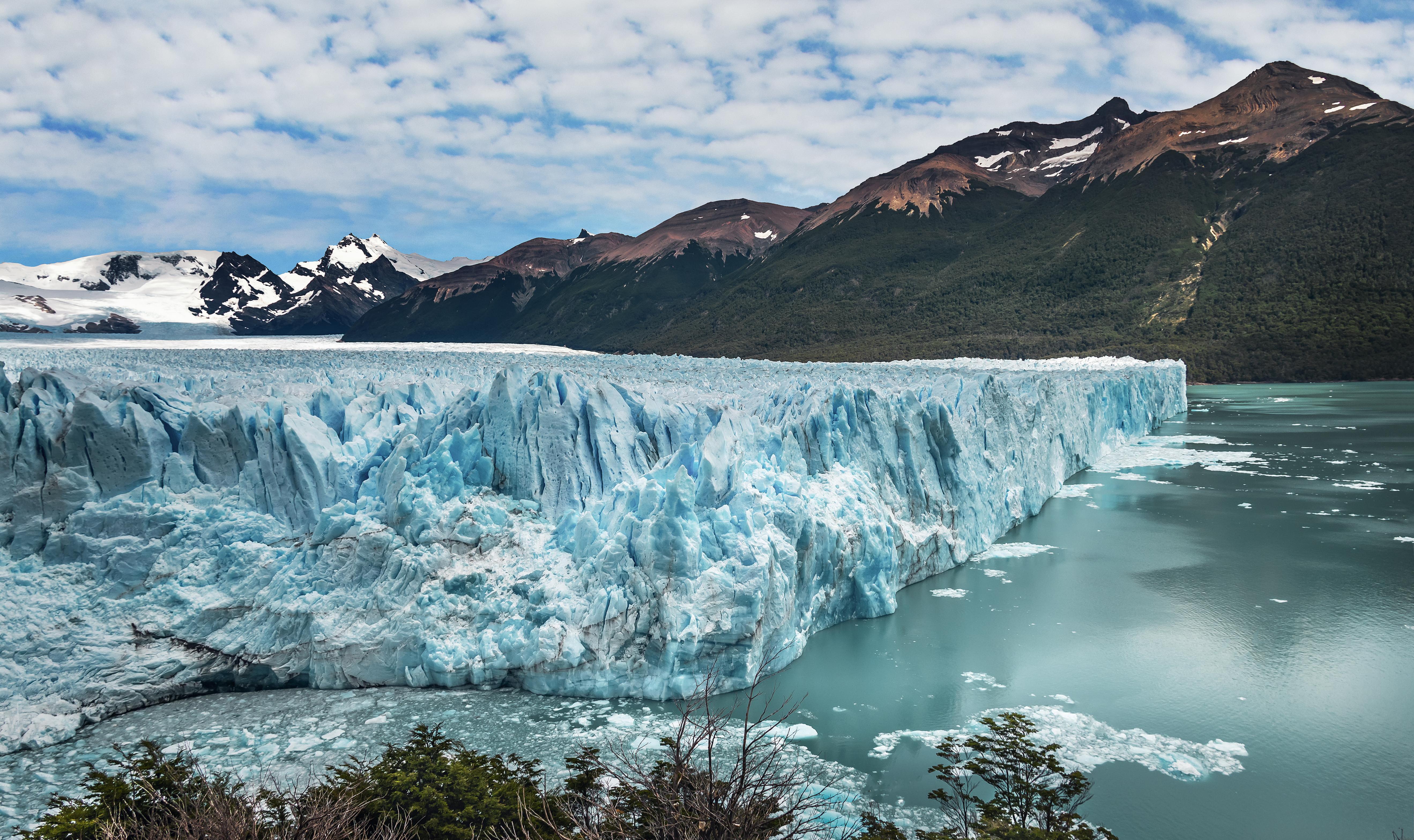
Deep in the wilds of Patagonia, Argentina’s Perito Moreno Glacier is one of the most active and visually spectacular ice masses on Earth. Unlike most glaciers, which are retreating due to climate change, Perito Moreno is advancing, continuously pushing forward into the icy waters of Lake Argentino. Its towering 200-foot-high (60 meters) ice walls radiate an electric blue hue, their jagged peaks appearing like an enormous frozen fortress. The glacier moves at an incredible pace of about 6 feet per day, causing frequent calving events, where massive slabs of ice the size of buildings break off and crash into the lake with a thunderous roar. The sound reverberates across the valley, creating a phenomenon known as "glacial thunder", as if the Earth itself is groaning. These slow-motion ice avalanches, where giant shards of translucent blue ice topple dramatically into the water, are both awe-inspiring and humbling. What makes Perito Moreno even more unique is the natural ice dam it occasionally forms, blocking part of Lake Argentino. When the water pressure becomes too great, a breathtaking rupture occurs, sending torrents of water crashing through the ice, creating one of nature’s most jaw-dropping spectacles. With its brilliant color palette, colossal size, and dynamic nature, Perito Moreno appears like a shifting, living ice world, reminiscent of an alien landscape caught mid-collapse.
3. The Blue Caves of Vatnajökull, Iceland
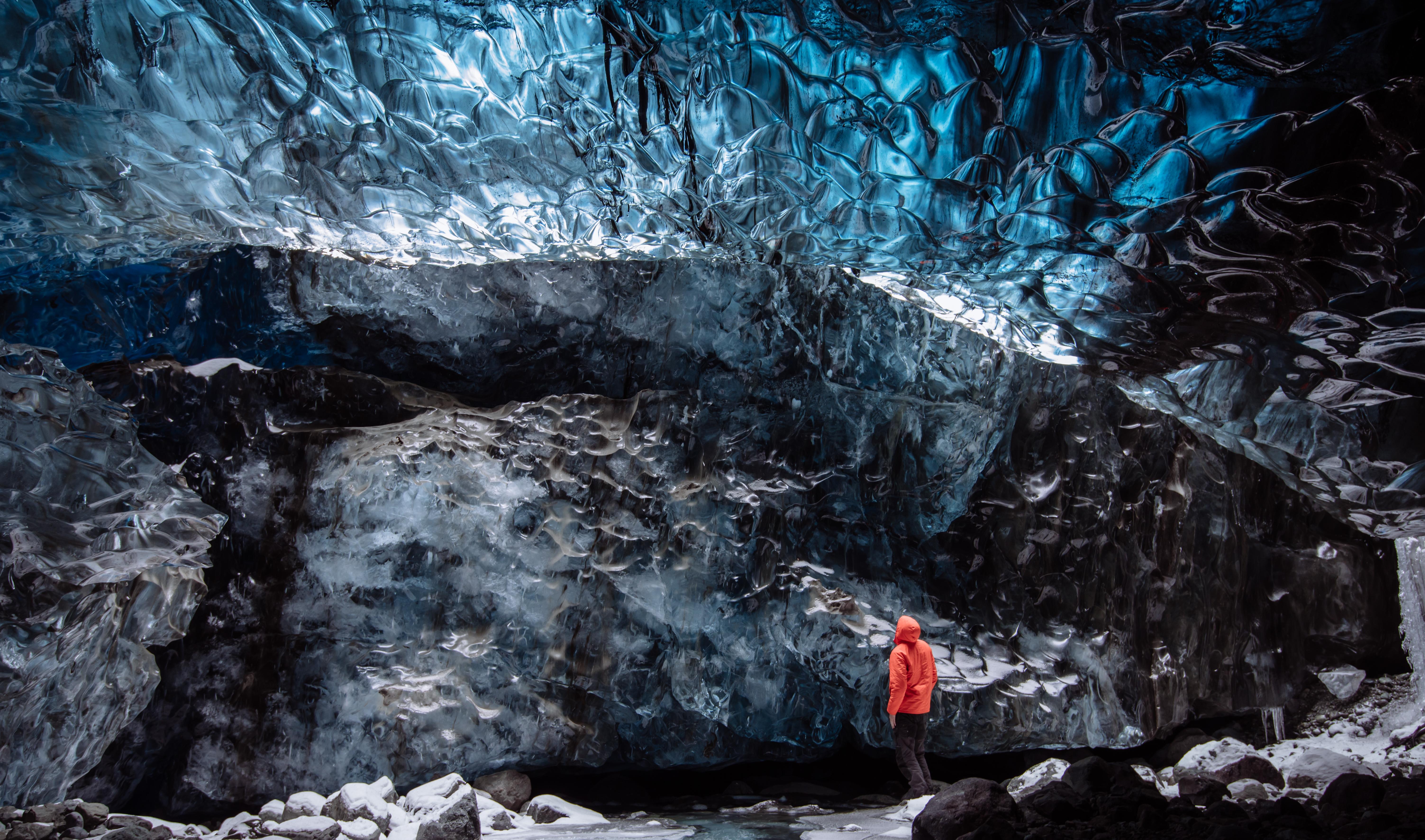
Hidden beneath Iceland’s Vatnajökull Glacier, Europe’s largest ice cap, lies a breathtaking network of glacier caves that seem like portals to another world. These stunning, naturally-formed ice tunnels, sculpted by meltwater rivers in summer, only become accessible in the depths of winter when the sub-zero temperatures solidify them into ethereal, crystalline cathedrals. Inside the caves, the ice glows in brilliant shades of sapphire and cerulean blue, resembling the surreal bioluminescence of an underwater alien world. The deeper the ice, the purer the blue, with some sections appearing as ghostly cyan, while others have an almost indigo glow. The translucent ceilings allow light to filter through in dreamlike waves, creating a mesmerizing display that constantly shifts with the movement of the sun. Each year, the shapes and paths of the caves change, meaning no two visits are ever the same. Some tunnels are massive, large enough to fit a cathedral, while others form narrow, twisting passages that glow like frozen rivers of light. Walking through these caves feels like entering the core of a frozen exoplanet, their ceilings resembling icy waves suspended in time. This fleeting beauty, melting and reforming every year, makes the Vatnajökull ice caves one of Earth’s most otherworldly frozen wonders.
4. Mount Erebus’ Ice Fumaroles, Antarctica
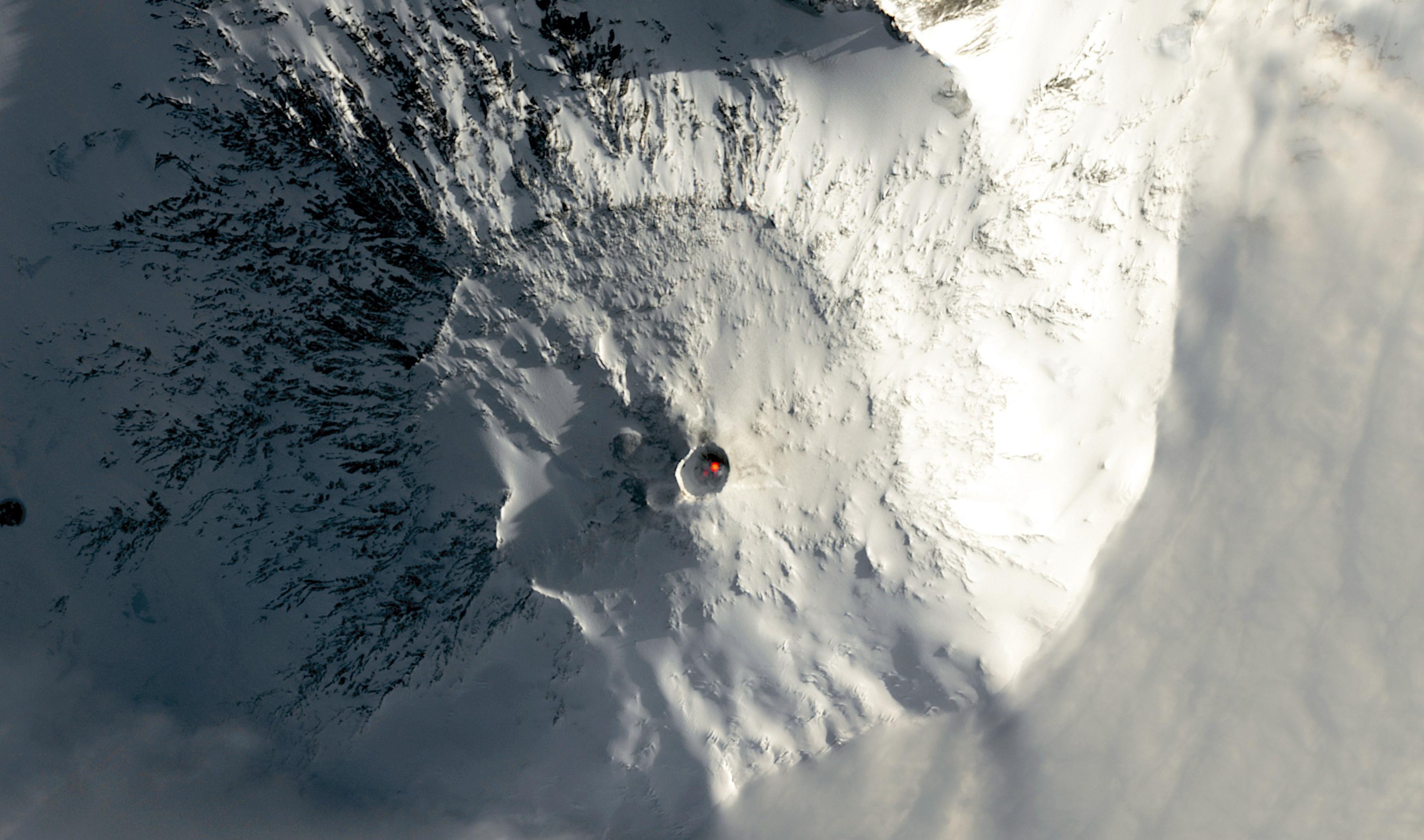
At the southernmost edge of our planet, Mount Erebus, Antarctica’s only active volcano, is home to some of Earth’s strangest icy formations—towering steam vents, known as ice fumaroles, that rise like frozen chimneys from the volcanic slopes. These bizarre structures, some reaching over 30 feet (9 meters) high, are created when hot volcanic gases escape from deep within the Earth, instantly freezing upon contact with the frigid air. The result is twisting ice towers that look like something from a glacial alien world, with superheated steam still billowing from their hollow interiors. Erebus is one of only a handful of volcanoes on Earth with a persistent lava lake, meaning molten rock is constantly bubbling beneath its surface. This stark contrast of fire and ice creates an extreme, dual-element landscape—one where frozen spires stand above glowing magma, and where steam solidifies into ice in mere seconds. Scientists study these fumaroles to understand similar geological processes on Mars and Jupiter’s icy moon, Europa, where cryovolcanoes (ice volcanoes) are thought to exist. The combination of frozen wasteland and volcanic activity makes Mount Erebus and its steam towers one of the most alien-looking environments on Earth—a frozen volcanic enigma standing at the bottom of the world.
5. Blood Falls, Antarctica
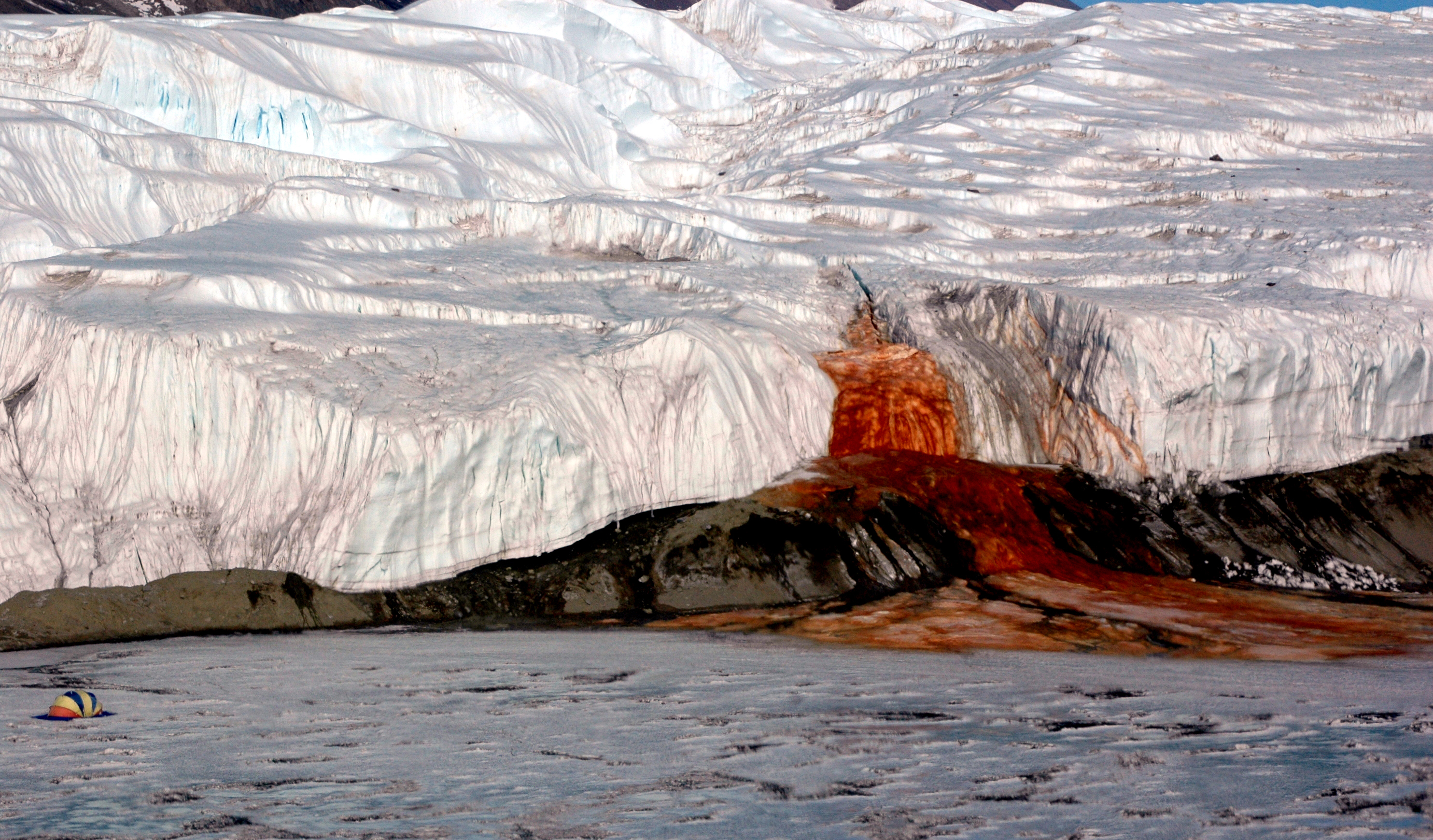
Tucked deep within the McMurdo Dry Valleys, one of the most extreme deserts on Earth, Blood Falls is one of Antarctica’s most hauntingly beautiful and scientifically fascinating frozen anomalies. Here, a deep crimson river seeps from the edge of the Taylor Glacier, staining the surrounding ice with streaks of what looks like flowing blood. This eerie phenomenon is caused by iron-rich brine trapped beneath the glacier for over a million years. The extreme pressure beneath the ice keeps the water in a liquid state, but when it escapes and hits the open air, it oxidizes—just like rust—creating the deep scarlet hue. What makes Blood Falls even more astonishing is the subglacial microbial life thriving inside it, completely cut off from light and oxygen for millions of years. Scientists study this ecosystem because it mimics the conditions of possible extraterrestrial life on Mars and Europa, where frozen, salty water may exist beneath the surface. Standing before Blood Falls, it’s easy to imagine being on a hostile alien planet where glaciers bleed and life persists in the most extreme conditions imaginable. It is a portal to Earth’s deep past and possibly to the secrets of other worlds.
6. The Enchanted Snow Formations of Lapland, Finland
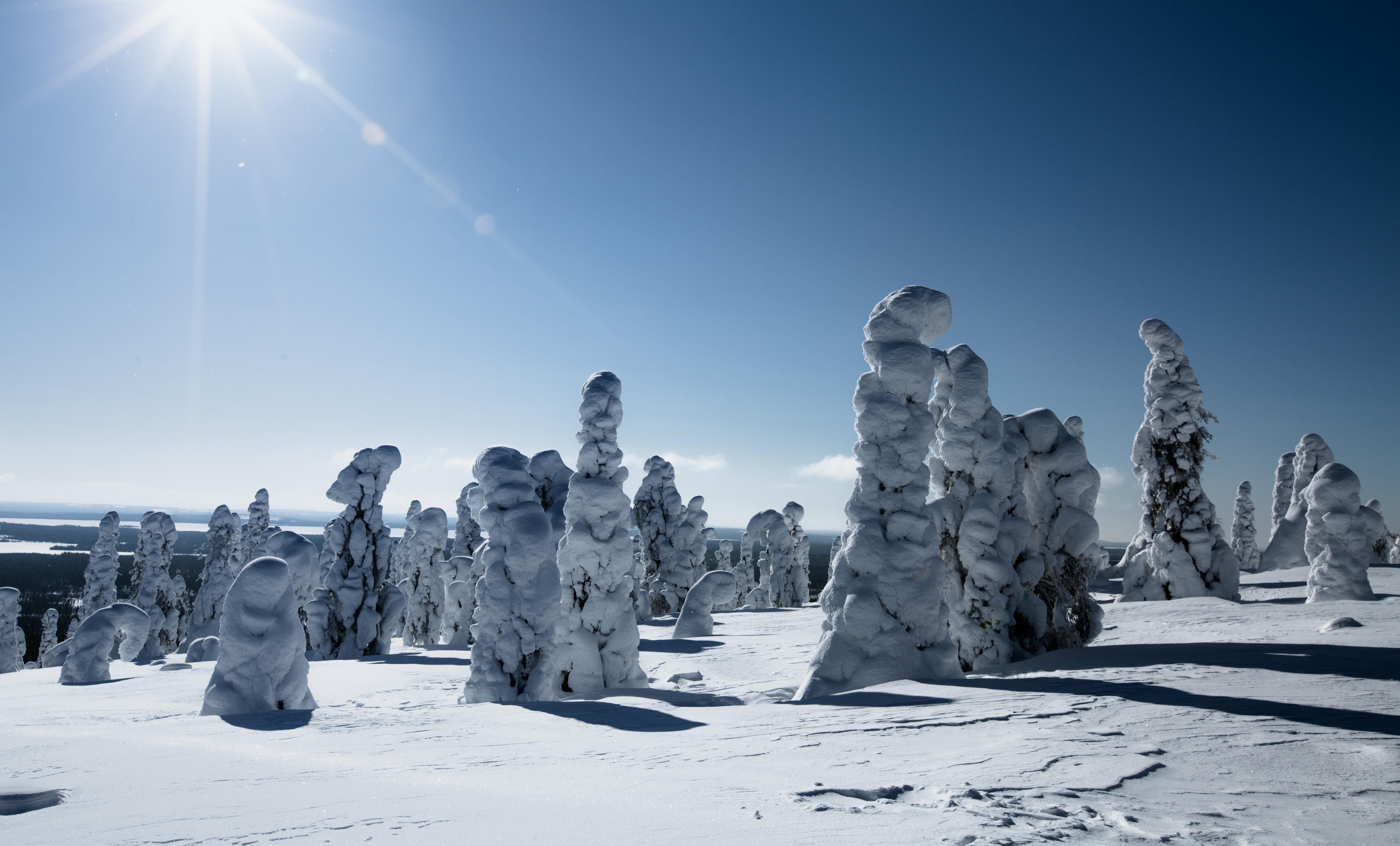
In the heart of Finland’s Arctic Lapland, an extraordinary phenomenon transforms the landscape into something resembling an ice planet frozen in time. As winter tightens its grip, the subarctic forests become buried under thick layers of rime frost and heavy snowfall, reshaping ordinary trees into surreal, towering ice sculptures. These ghostly white figures, some reaching heights of over 20 feet (6 meters), bend and contort under the extreme weight of accumulated ice, taking on bizarre, almost humanoid shapes. Under the Arctic twilight or the glow of the aurora borealis, these frozen giants seem to come alive, casting eerie shadows across the silent landscape. The unearthly blue and green lights of the northern sky dance over the snow-laden wilderness, adding an even more mystical quality to this frozen world. Temperatures in Lapland can plummet to -40°F (-40°C) or lower, preserving these icy behemoths for months. The stillness of the region, combined with the absolute silence of the frozen tundra, makes walking among these towering formations feel like stepping onto an alien world. Whether exploring by snowmobile, husky sled, or on foot, visitors are transported into a landscape so stark and strange it feels as though it belongs to another planet entirely.
7. The Ghost Ice of Lake Abraham, Canada
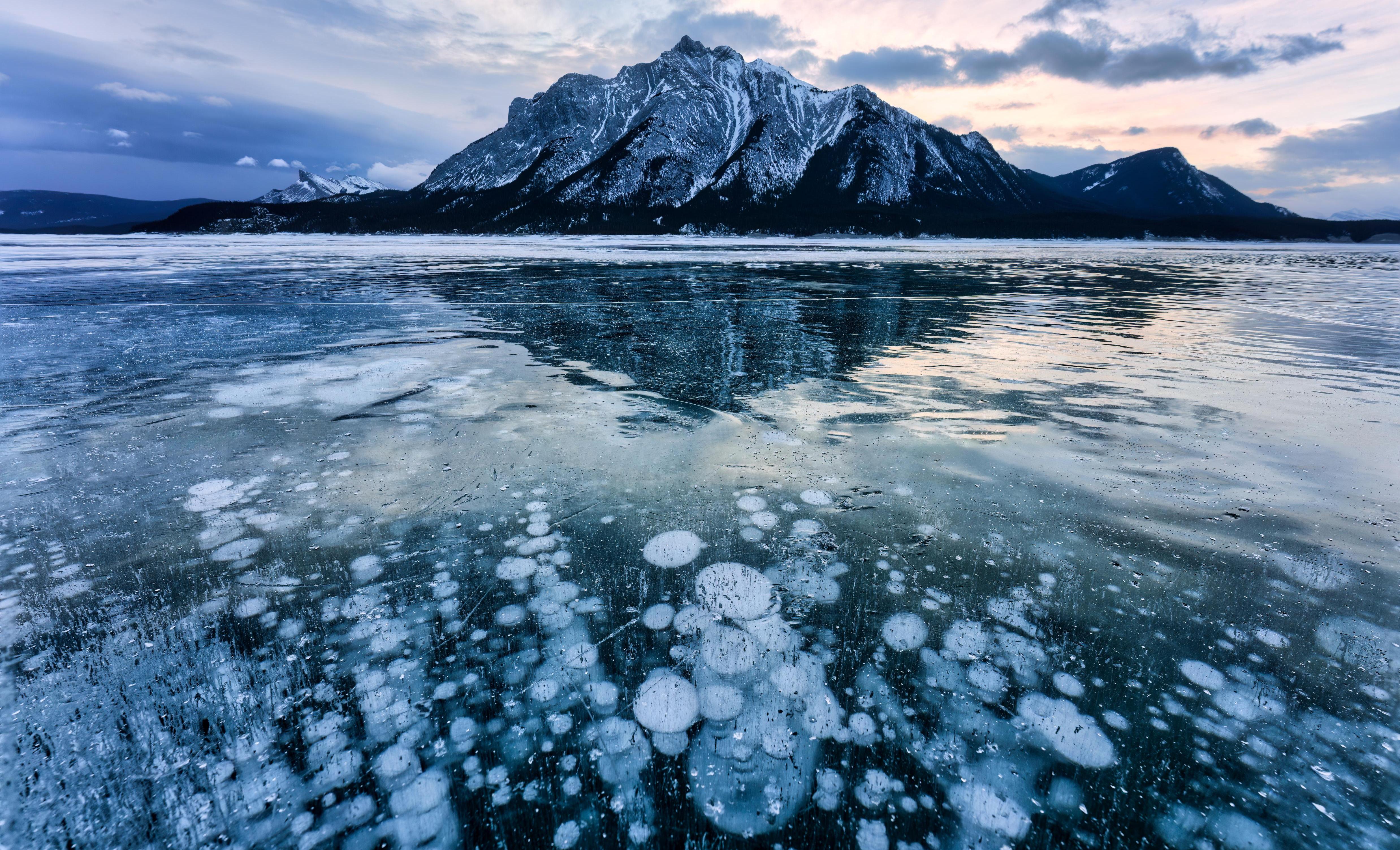
Tucked away in the Canadian Rockies, Lake Abraham is a man-made reservoir that undergoes a mind-bending transformation each winter, becoming an icy dreamscape of trapped air bubbles frozen in time. These ghostly, white spheres are formed when methane gas from decaying organic matter at the lake’s bottom rises to the surface and gets suspended in the thickening ice as temperatures drop. Unlike other frozen lakes, where ice appears smooth and flat, Lake Abraham’s frozen surface looks as if thousands of white orbs are floating just beneath your feet, forming eerie, layered staircases of ice leading into the abyss. Depending on the depth and the clarity of the ice, the bubbles appear stacked in intricate, mesmerizing patterns, resembling a cosmic time capsule or an interstellar ice cave. On clear winter nights, the experience becomes even more surreal. The northern lights frequently illuminate the sky, their green and purple hues reflecting off the frozen lake’s surface, making it seem as if an alien galaxy is trapped below the ice. Walking across the lake feels like stepping onto a frozen cosmic abyss, offering one of the most otherworldly winter experiences on Earth.
8. Jokulsarlon’s Diamond Beach, Iceland
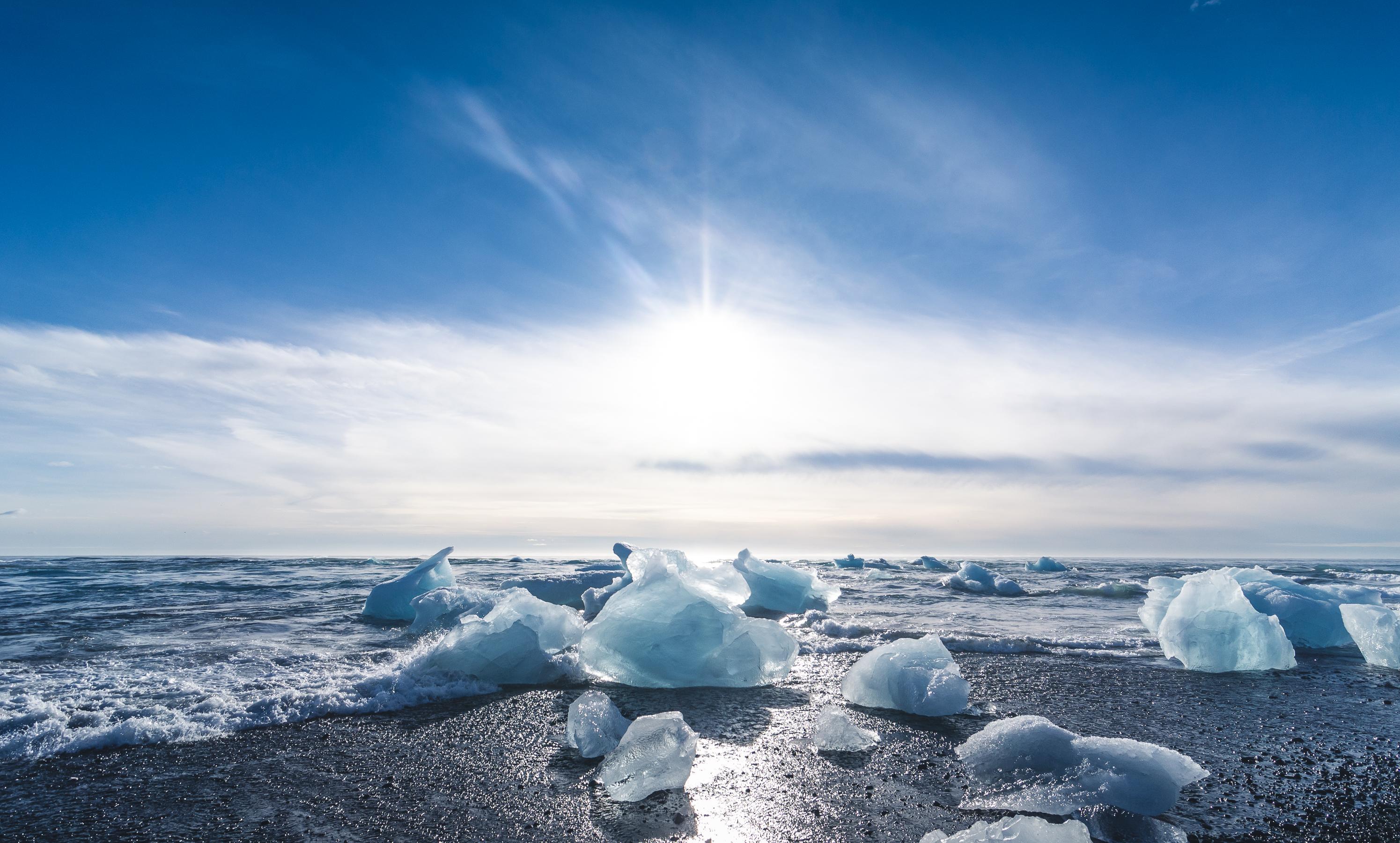
On the southern coast of Iceland, where the mighty Jökulsárlón Glacier Lagoon meets the roaring Atlantic Ocean, an ethereal sight awaits—"Diamond Beach," where shattered pieces of icebergs sparkle like otherworldly gemstones against the stark contrast of black volcanic sand. This mesmerizing shoreline looks more like the surface of an exoplanet than anything found on Earth. The journey of these glacial diamonds begins high in Vatnajökull, Europe’s largest glacier. As the glacier calves into Jökulsárlón Lagoon, massive chunks of crystalline ice drift toward the ocean, sculpted and polished by the waves before being washed ashore. These icebergs range from deep blue to glass-clear, creating an almost unreal display of frozen jewels scattered along the coast. Under different lighting conditions, the landscape transforms. At sunrise, the ice reflects hues of rose and gold; during the midnight sun, the entire beach glows with an ethereal light. Under the northern lights, the icebergs gleam with a spectral, eerie brilliance, making it feel as though you've stepped into an icy dreamscape from another world. The contrast of jet-black sand against glowing ice sculptures is nothing short of spectacular, solidifying Diamond Beach as one of the most breathtaking frozen wonders on the planet.
9. Oymyakon: The Coldest Inhabited Place on Earth, Russia
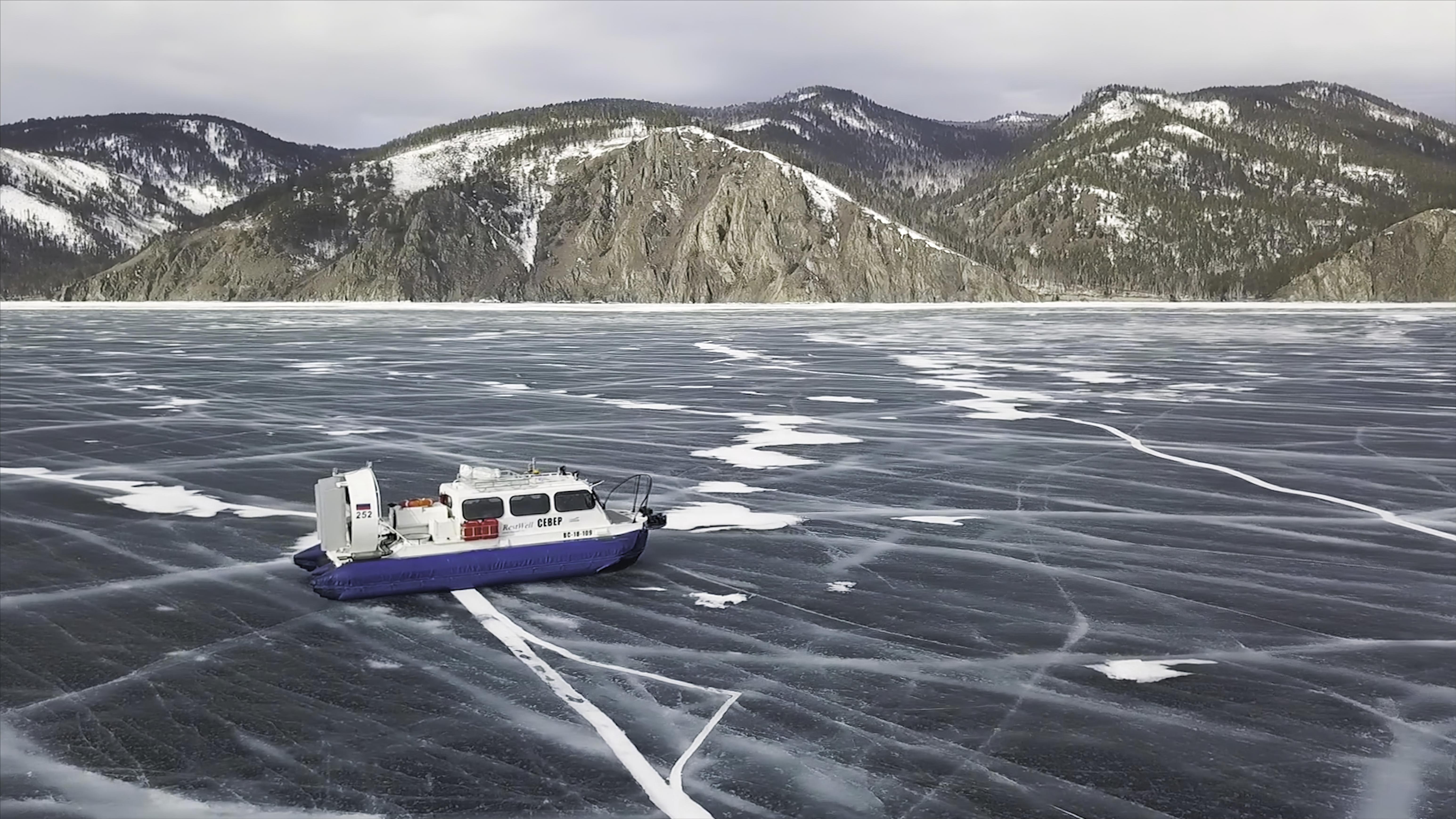
Deep in Siberia, beyond the Arctic Circle, lies Oymyakon, a settlement so hostile to life that it feels more akin to an icy wasteland on a distant planet than an Earthly village. Holding the record as the coldest inhabited place on Earth, with temperatures plunging to -96°F (-71°C), this frozen expanse is a realm of eternal frost and extreme survival. In Oymyakon, winter never truly ends—the ground remains frozen year-round, making traditional plumbing impossible. Locals rely on reindeer fur, fires, and layers upon layers of clothing just to survive a quick walk outside. Eyelashes freeze solid within seconds, cars must be left running constantly to prevent engines from turning into ice blocks, and even ink in pens freezes if exposed to the air. At midday, the sun hangs weakly in the sky, casting only a dim, ghostly glow over a landscape covered in frost. The Lena River, which normally rushes through the Siberian wilderness, turns into an icy road for much of the year, used by locals to traverse the frozen tundra. Everything in Oymyakon—from abandoned houses to entire forests—is coated in a thick, crystalline layer of frost, making the town appear like an abandoned ice colony on a distant planet. Despite its extreme conditions, a small population of about 500 people endures here, preserving traditions that date back centuries. Life in Oymyakon is a testament to human resilience against one of the most extreme frozen environments on Earth, a place that feels closer to an Arctic research outpost on a frozen exoplanet than a town on Earth.
10. The Drifting Icebergs of Disko Bay, Greenland
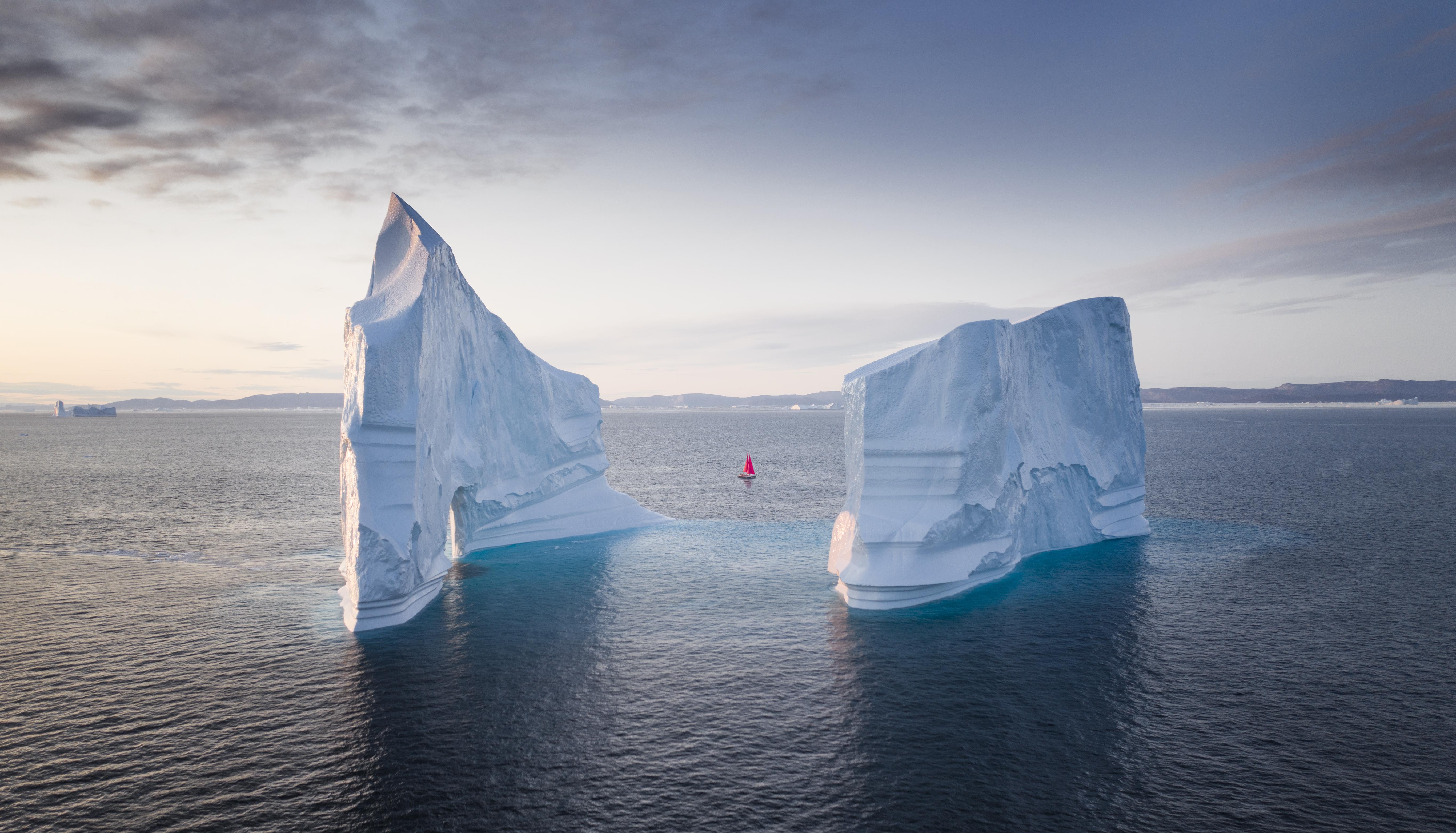
Floating in the frigid waters of Greenland’s Disko Bay, some of the most spectacular, alien-looking icebergs on the planet drift silently across the Arctic seas. These enormous ice formations, often striped with shades of blue, white, and even streaks of volcanic ash, appear more like sculpted monoliths from another world than natural creations of Earth. The process begins in the Ilulissat Icefjord, a UNESCO World Heritage Site, where massive chunks of glacial ice—some towering over 300 feet (90 meters) above the water—calve from the Sermeq Kujalleq Glacier and slowly drift out to sea. Unlike the flat, familiar icebergs seen in the Atlantic, these ice behemoths take on bizarre, cathedral-like shapes, forming twisting spires, jagged peaks, and natural ice bridges. Under the midnight sun, these frozen monoliths glow in hues of deep blue, turquoise, and silver, reflecting the sunlight like frozen prisms. On particularly clear nights, the Arctic sky comes alive with the aurora borealis, and the icebergs take on an eerie, phosphorescent glow, as if illuminated from within. Some icebergs in Disko Bay have been floating for years, even decades, slowly melting and reshaping as they journey through Arctic waters. The largest among them can be as big as entire city blocks, dwarfing fishing boats and even ships that pass nearby. It’s a constantly shifting, dynamic ice world—a floating sculpture garden of frozen giants, drifting across the Arctic, changing shape as if under the hand of some cosmic artist. To witness Disko Bay’s frozen wonders is to experience a glimpse of another planet, where time moves at an ancient pace, and ice itself tells the story of a world shaped by both cold and time.
11. The Sapphire Ice of Lake Michigan, USA
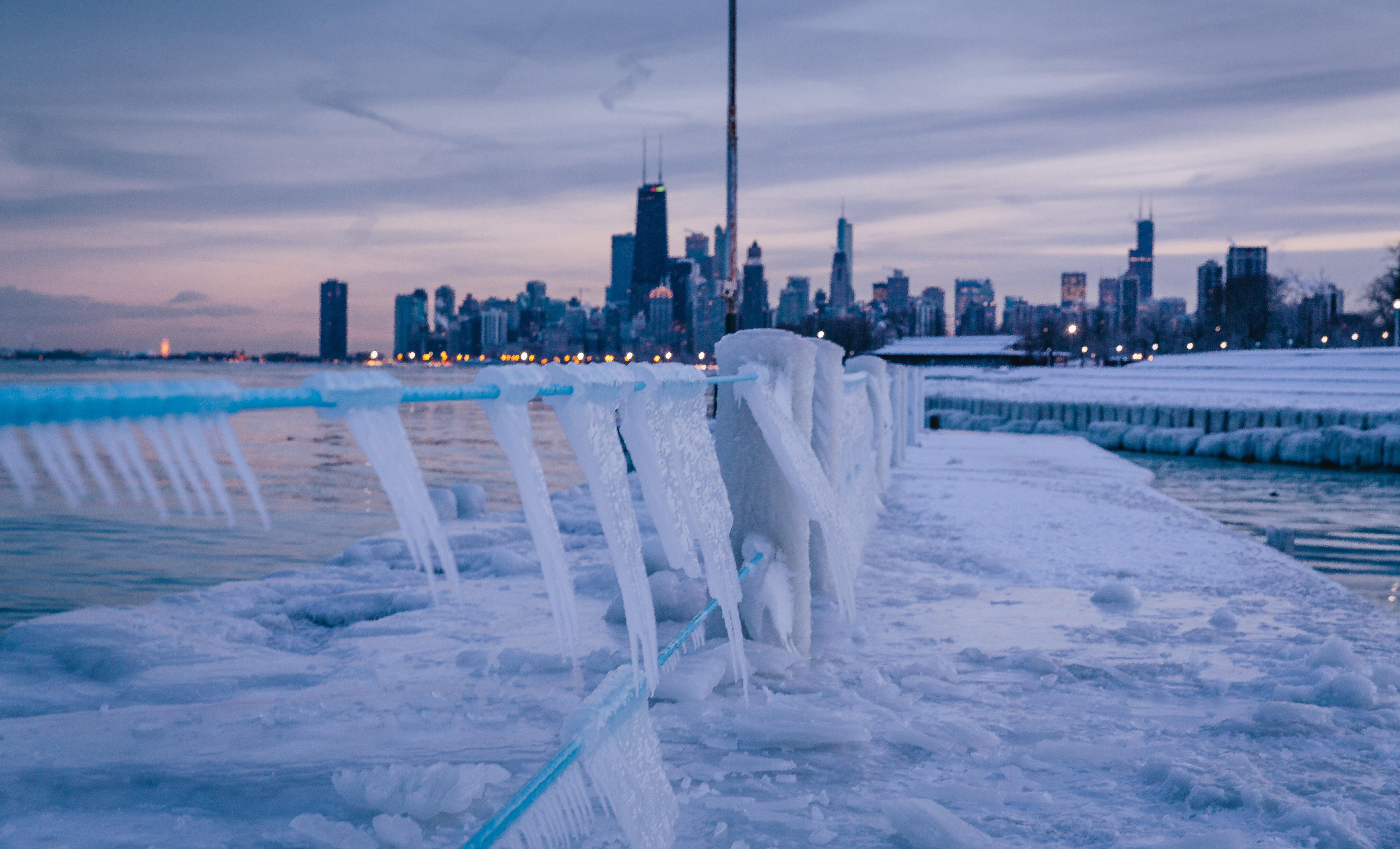
Each winter, the frigid waters of Lake Michigan give rise to an astonishing natural phenomenon—massive, translucent blue ice slabs that wash up along the shoreline, creating a surreal, frozen seascape. These slabs, often weighing several tons, are formed when deep, undisturbed lake ice fractures due to shifting currents and winds. The result? A vast, scattered array of shimmering, sapphire-hued icebergs that seem to belong to another world rather than an inland lake in North America. What makes these formations so spectacular is their pure, glass-like clarity. Unlike rough, snowy ice that forms from compacted precipitation, these slabs originate from super-cooled, slow-forming lake ice, making them unusually smooth and clear. Depending on the thickness and density, the ice can appear as crystal-clear sheets, vibrant electric blue slabs, or deep aquamarine blocks, their color intensifying under the bright winter sun. Walking among these sapphire giants feels like stepping onto an Arctic coastline, where a frozen sea has been shattered into pieces and left behind by an alien tide. Despite their ephemeral nature, these ice formations serve as a stunning reminder of Lake Michigan’s raw, untamed beauty, offering a glimpse into a landscape that is constantly reshaped by the elements.
12. The Unreal Ice Caves of Kamchatka, Russia
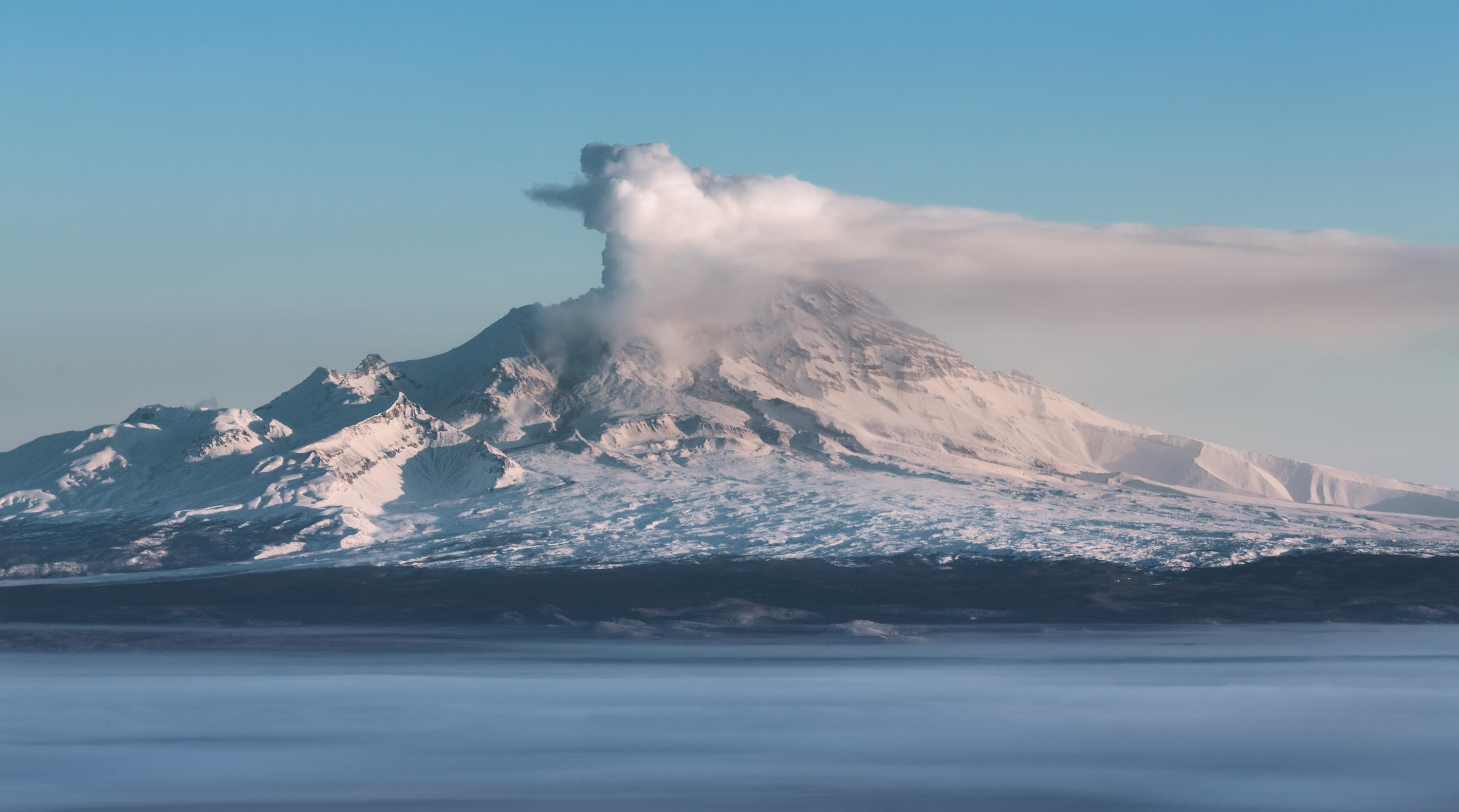
Russia’s Kamchatka Peninsula, home to 160 volcanoes, hides massive ice caves formed by geothermal vents. Unlike the deep-blue glacial caves of Iceland or Alaska, Kamchatka’s ice caves glow with an eerie, multi-colored luminescence. Their vaulted ceilings, carved by meltwater and heated steam, filter sunlight through thin layers of ice, creating a shifting spectrum of emerald greens, golden ambers, electric blues, and soft violets. Walking inside these shimmering tunnels feels like stepping into a crystal cavern on an alien planet, where the ice appears alive, pulsing with surreal colors. One of the most famous of these caves, located near Mutnovsky Volcano, features cathedral-like ice domes that stretch for hundreds of feet, forming a winding, frozen labyrinth. The walls, appearing almost transparent in places, allow light to pass through in shimmering waves, while the floor is often coated with a thin mist of geothermal steam, making it feel as if you’re exploring a living, breathing ice world. Despite their dreamlike appearance, these caves are constantly changing and incredibly fragile. Warm volcanic air slowly reshapes them, and by late summer, many of the tunnels collapse entirely, only to reform again during the harsh Siberian winter. The combination of volcanic activity, glacial melt, and light refraction gives each cave a completely unique, unrepeatable look, meaning no two visits are ever the same.
13. The Frozen Waterfalls of Plitvice Lakes, Croatia
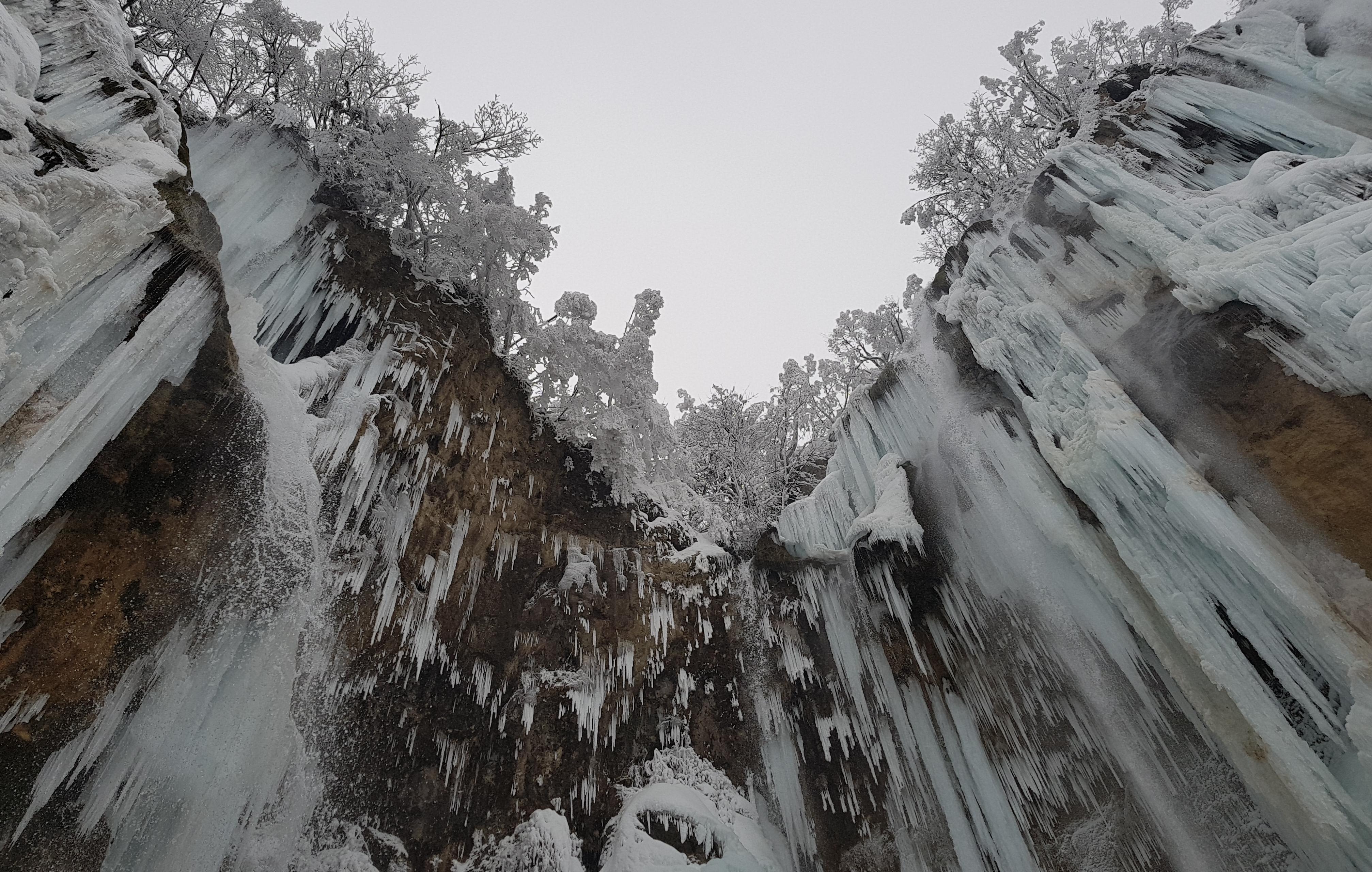
In the heart of Croatia’s Plitvice Lakes National Park, winter transforms an already stunning landscape into something that feels like it belongs to another planet. The park, known for its turquoise lakes and cascading waterfalls, turns into an ice kingdom as temperatures drop. Waterfalls that rush and roar in the summer months freeze mid-motion, forming massive ice curtains, delicate frost patterns, and stalactite-like icicles that hang from the cliffs like alien spires. The lakes themselves don’t freeze completely, but instead, a surreal contrast emerges—sections of the lakes remain liquid, reflecting the deep blue of the sky, while frozen segments glow an eerie shade of blue-green. Snow blankets the surrounding forest, adding to the ethereal stillness, and mist often rises from the warmer sections of water, creating an effect reminiscent of an icy exoplanet where steam vents meet frozen terrain. As the sun filters through the crystalline ice formations, they sparkle like frozen chandeliers, casting reflections that seem too perfect for this world. Some waterfalls freeze into intricate, lace-like patterns, while others solidify into massive walls of ice. Visitors can walk along wooden pathways, surrounded by frost-covered trees, as the only sound is the occasional crack of shifting ice—a reminder that even in stillness, this landscape is alive.
14. The Ice Spires of Torre del Paine, Chile
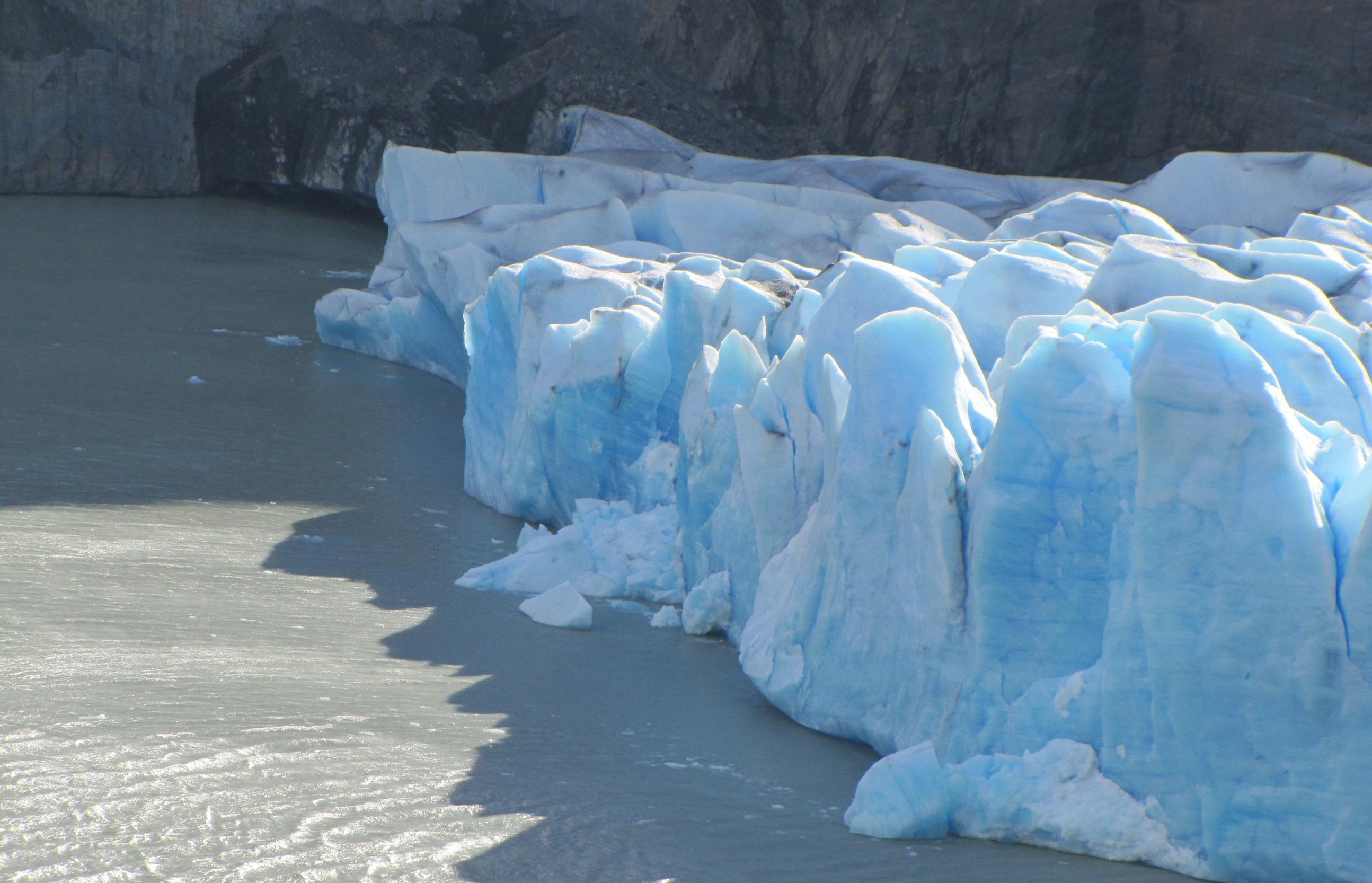
In the windswept wilderness of Chilean Patagonia, the jagged peaks of Torres del Paine National Park become an icy fortress, their vertical rock faces draped in frost and glaciers. This rugged mountain range is known for its breathtaking spires, but in winter, the already surreal landscape is heightened to an extreme. Wind-driven snow and sub-zero temperatures sculpt the granite towers into eerie frozen citadels, with icicles stretching meters down their sheer faces. What makes this frozen wonder unique is the wind’s relentless impact. Patagonia is famous for its ferocious katabatic winds, which can reach speeds of over 100 mph (160 km/h), blasting ice crystals through the air and reshaping the mountains’ surfaces. As a result, the peaks are often covered in delicate, feather-like ice formations known as "penitentes", which point skyward like the spines of an alien creature. Glaciers in the region also contribute to the unearthly scenery. The Grey Glacier, part of the Southern Patagonian Ice Field, feeds into a lake where massive electric-blue icebergs break free and drift like frozen islands, their jagged forms mirroring the towering peaks behind them. When illuminated by the setting sun or the southern lights (aurora australis), the park’s frozen monoliths appear bathed in an ethereal glow, creating a landscape that feels like a lost world frozen in time.
15. The Frozen Wave Formations of Antarctica’s Dry Valleys
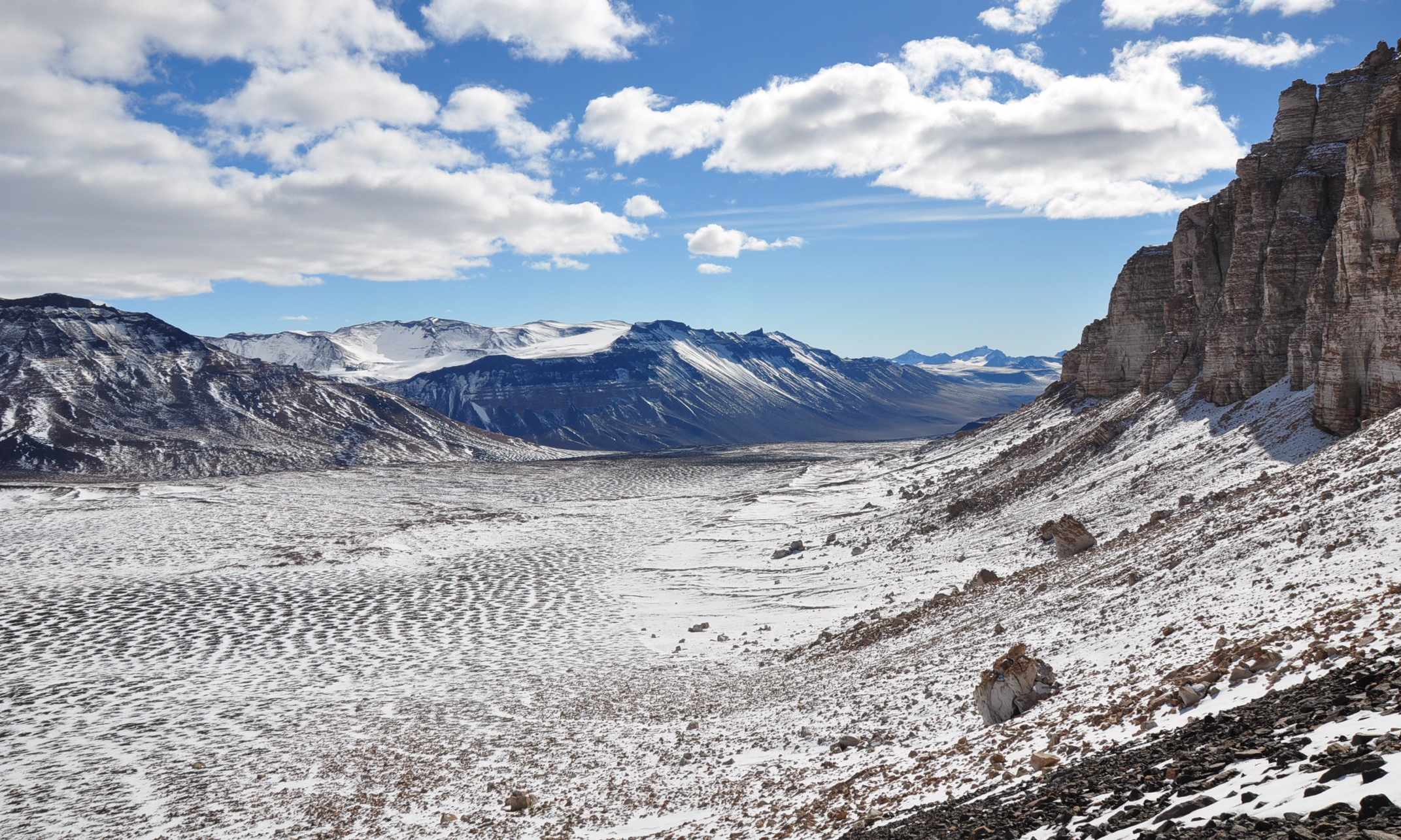
Antarctica’s McMurdo Dry Valleys are already one of the most extreme and alien places on Earth—an icy desert where almost no precipitation falls, making it one of the driest places on the planet. Yet even here, strange frozen formations exist that defy logic. One of the most surreal sights in this region is the frozen wave formations, created by the relentless Antarctic winds and shifting ice sheets. Unlike the smooth, reflective ice of lakes like Baikal or Michigan, the ice here takes on the appearance of ocean waves frozen mid-motion. The relentless katabatic winds, which rush down from the Antarctic Plateau at speeds exceeding 200 mph (322 km/h), sculpt the ice into rolling, undulating ridges, giving the illusion of a solid sea caught in time. Some ice formations are so warped and folded that they look like fossilized waves, frozen for thousands of years. Others resemble glass dunes, their translucent blue surfaces glowing in the rare Antarctic sunlight. The frozen waves of the Dry Valleys are so alien in appearance that NASA has studied them as a potential analog for ice formations on Mars and Europa. Scientists believe that if extraterrestrial ice sheets exist, they may look remarkably similar to these mind-bending Antarctic landscapes.
16. The Black Ice of Lake Druzhby, Antarctica
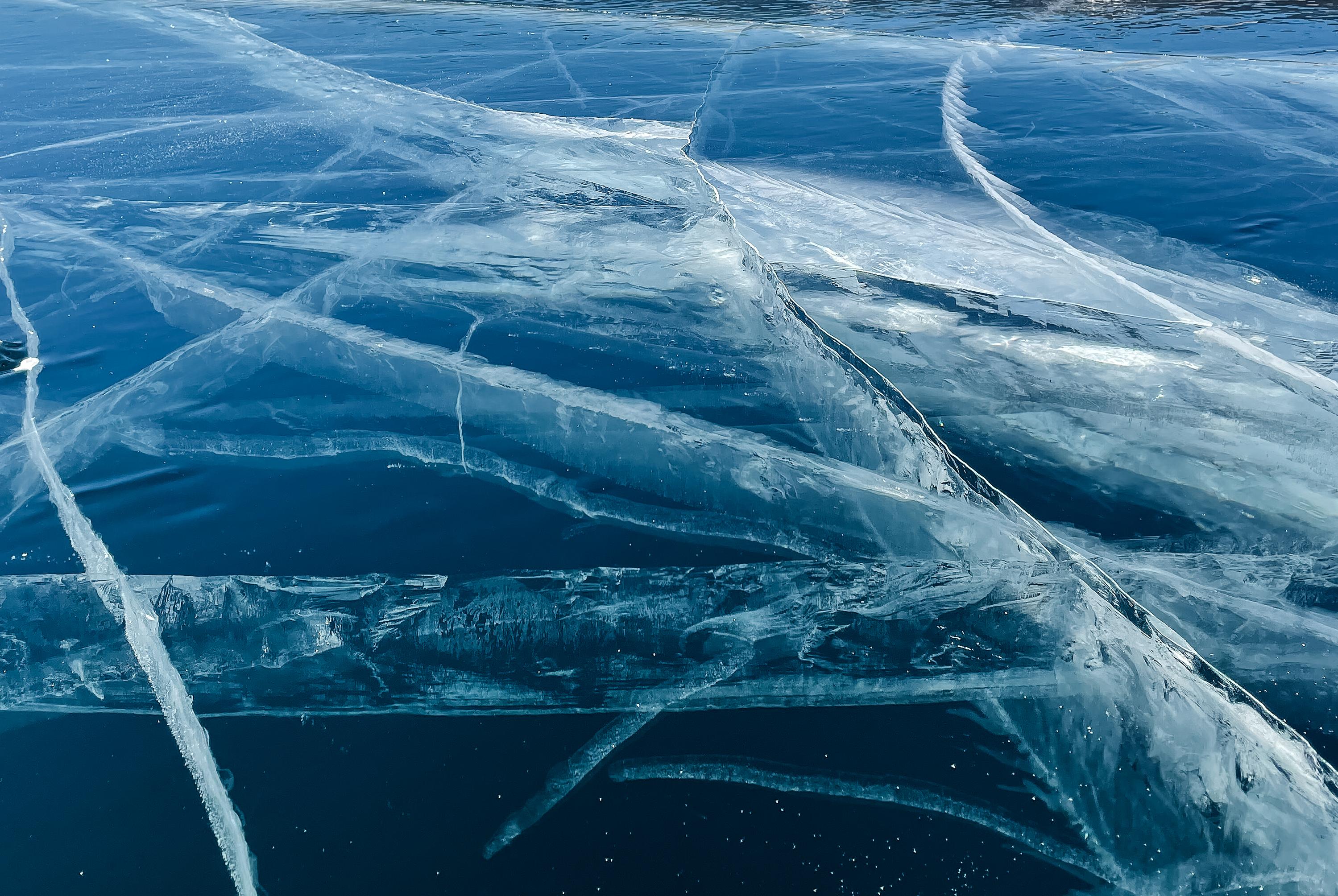
Deep in East Antarctica lies Lake Druzhby, a frozen anomaly unlike any other. While many lakes freeze over with a typical frosted, snow-covered surface, Lake Druzhby’s ice remains perfectly transparent, forming an eerie, glass-like sheet that seems almost unnatural. This ice is so crystal clear that visitors standing on its surface can see straight down into the depths, where ancient air bubbles, cracks, and ice formations create an optical illusion of endless space below their feet. Some sections appear almost jet black, reflecting the sky above so perfectly that it looks like a portal into the abyss. In some areas, cracks form in intricate spiderweb patterns, resembling alien symbols etched into a frozen void. Due to the lake's remote location and extreme cold, it remains practically untouched, with its surreal, obsidian-like ice offering one of the most otherworldly experiences on Earth. When the sun is at just the right angle, rainbows refract through the clear ice, creating a kaleidoscope of shifting colors beneath the feet of those daring enough to walk across its eerie, mirror-like surface. It’s as if nature has created a frozen stargate, a doorway to another realm trapped beneath layers of pristine Antarctic ice.
Earth’s Frozen Alien Worlds
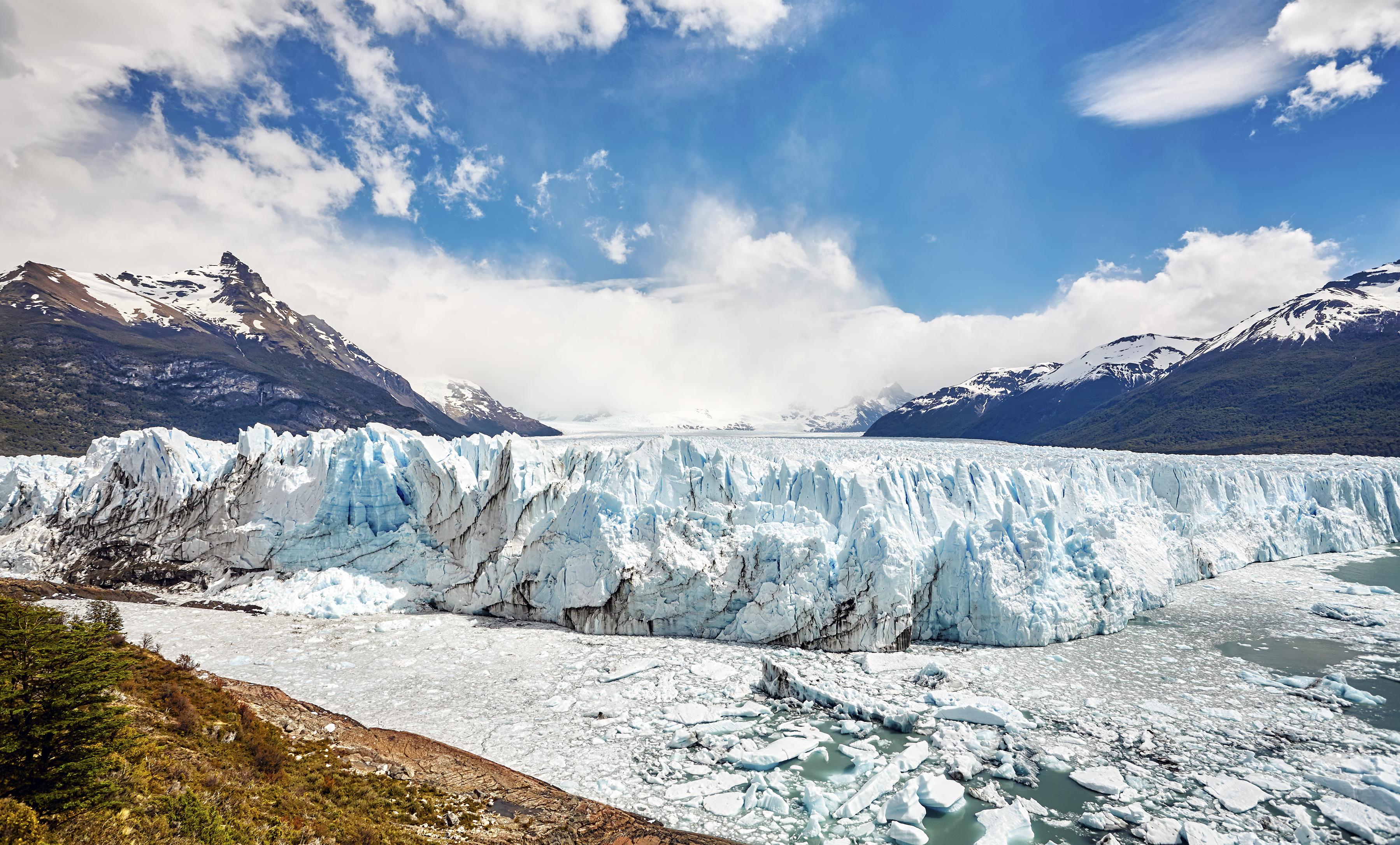
From the sapphire ice sheets of Lake Michigan to the glowing ice caverns of Kamchatka, these frozen landscapes reveal that our planet is filled with surreal, almost extraterrestrial beauty. Sculpted by time, weather, and geology, they serve as nature’s own frozen artworks, where light refracts in crystalline towers, methane bubbles freeze in shimmering layers, and volcanic heat meets the deep cold to create icy dreamscapes unlike anywhere else on Earth. Each of these frozen wonders is a testament to Earth’s extremes, proving that the most alien-looking places may not be found on distant planets but right here, on our own world. As climate change threatens many of these delicate landscapes, their ethereal beauty becomes all the more precious, urging us to appreciate and protect the fragile balance that allows these icy realms to exist. For those who long to witness the surreal, the untouched, and the unexplainable, these frozen frontiers offer more than just a glimpse into winter’s artistry—they provide an unforgettable journey into the wild, frozen heart of our planet, where reality is as strange and breathtaking as science fiction itself.








